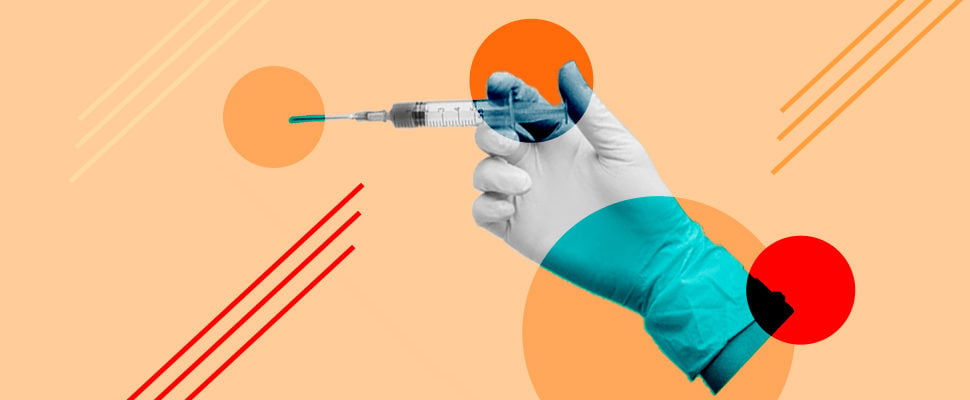While outbreaks of the devastating Ebola virus have – thankfully – generally been highly localized to West Africa, the highly infectious and lethal disease has generated global trepidation due to its characteristic haemorrhagic fever, a 50 percent chance of death on average, and the absence of any approved treatment. The most serious outbreak, occurring in early-2014 and ending two long years later, affected nearly 30,000 people and cause over 11,000 deaths, predominantly in Guinea, Liberia and Sierra Leone, igniting global efforts to develop a vaccine that could prevent future Ebola epidemics.
In 2019, MSD (Merck & Co. in the US and Canada) won that race when its vaccine, ERVEBO®, was approved by the European Medicines Agency (EMA) and the US FDA. All in all, it took just over five years for ERVEBO® to move from Phase 1 trials to regulatory approval, a significant advancement from the typical ten to 15 years it typically takes for vaccines to complete that journey.
However, ERVEBO® is not just MSD’s triumph. The Ebola vaccine was initially discovered as a biodefense vaccine at the Public Health Agency of Canada (PHAC). Once efficacy was established in animal studies, a multitude of actors, both private and public, were assembled to take the Ebola vaccine candidate through clinical development. National governments from Canada, the US and Africa; agencies like the US National Institutes of Health (NIHs) and the US Biomedical Advanced Research and Development Authority (BARDA); global institutions like the World Health Organization (WHO), the Wellcome Trust, Gavi and Medecins San Frontieres (MSF) – all came on board.
Part of this extensive collaboration was necessary because, in spite of MSD being one of the Big Four vaccine players globally, the pharma company nevertheless lacked any prior experience with Ebola virus or clinical development expertise in the specific West African countries.
In addition, as Jayanthi Wolf [executive director, Global Regulatory Affairs, at MSD] et al. identified in an article (“Applying lessons from the Ebola vaccine experience for SARS-CoV-2 and other epidemic pathogens”) regarding lessons learnt from MSD’s Ebola vaccine development experience, each entity played a specific contributory role across the broad global partnership, spanning aspects including preclinical studies, Good Manufacturing Practices (GMP) materials, clinical studies, public health responses and so on.
Particularly relevant to the current COVID-19 pandemic, the authors also flagged the challenges with the necessary manufacturing scale-up. For instance, they noted that “technology transfer and the establishment of a new manufacturing facility has many steps and requires significant time to execute (3-4 years is typical for a new vaccine). There is limited understanding outside of vaccine manufacturers and regulators on the rigorous requirements leading to approval of a vaccine manufacturing facility.” Furthermore, “manufacturing site selection for vaccines is a complex decision … [with] multiple factors, such as existing space, technical capability, infrastructure, and capacity.”
For that reason, the authors exhorted, “all parties involved must work to balance the desire to be ambitious (e.g., rapid development timelines) with execution realities and stakeholder expectations. Aggressive timelines are enticing for public health partners, but also require “right-first-time” execution to qualify the facility and manufacturing process, for which the probability of success for a new vaccine is likely medium to low.”
Another important lesson is the central role that the WHO has to play in rapid global approvals. The authors highlighted, “in order to accelerate vaccine access to African countries, the World Health Organization’s Prequalification Team (WHO-PQT) in collaboration with the EMA and AVAREF [the African Vaccines Regulatory Forum] developed an innovative facilitated process (roadmap) for decision making on the acceptability of the vaccine for registration. This allowed the company to make simultaneous submissions to EMA, WHO-PQT, and regulatory authorities in 14 African countries, with EMA acting as the reference agency.” Once ERVEBO® was conditionally approved in the EU in November, the WHO granted prequalification within 36 hours, and a month later, African countries began to approve the vaccine, resulting in near-simultaneous approval of the much needed vaccine in the areas where it was most desperately needed. For the MSD team, the takeaway when it comes to COVID-19 vaccines is that “regulatory agencies should prepare for the simultaneous approval of candidates in multiple countries. WHO’s leadership will be needed to facilitate innovative review processes and collaborative mechanisms to expedite approvals.”
Prior to regulatory approval, during the 2018-2020 Ebola outbreak in the Democratic Republic of the Congo, over 300,000 people were vaccinated through various emergency access programs. MSD has announced that licensed doses of ERVEBO® should be commercially available in Q3 2020. While prices have still not been officially set, the company has committed to pricing the single-dose injection at the lowest possible access price for poor and middle-income countries.



